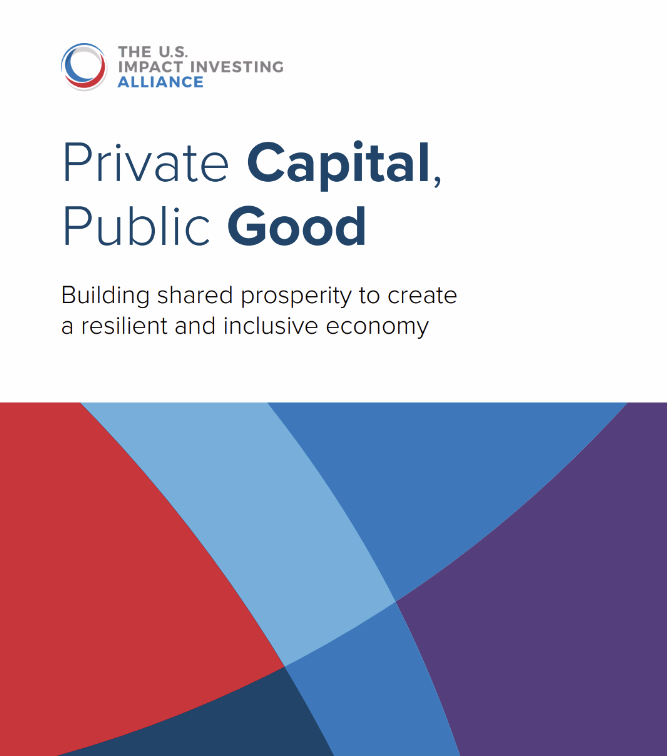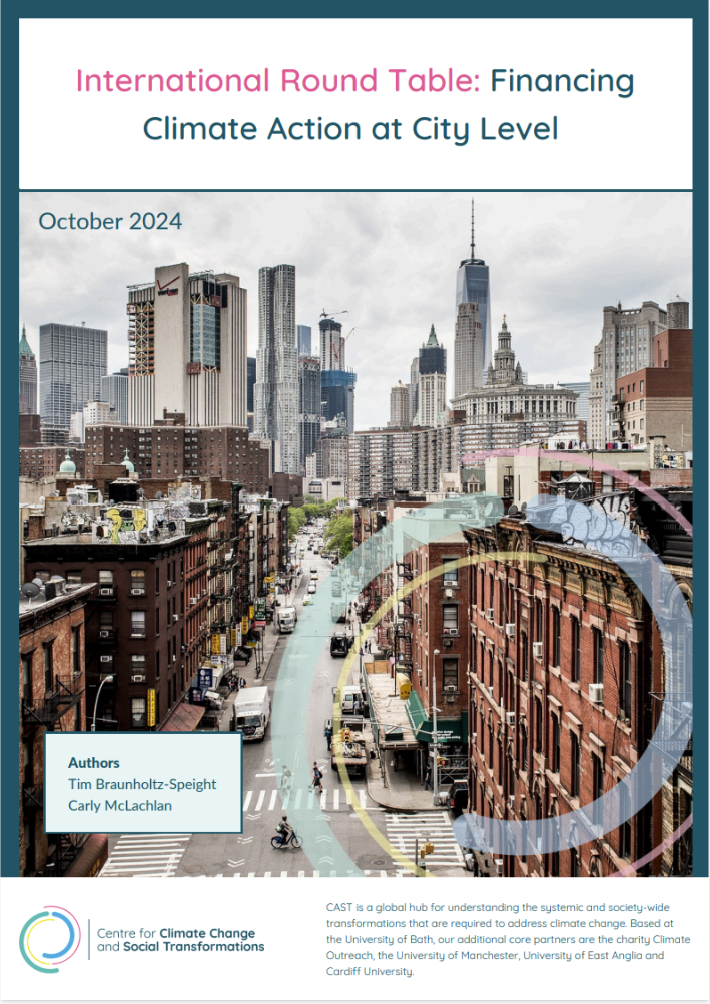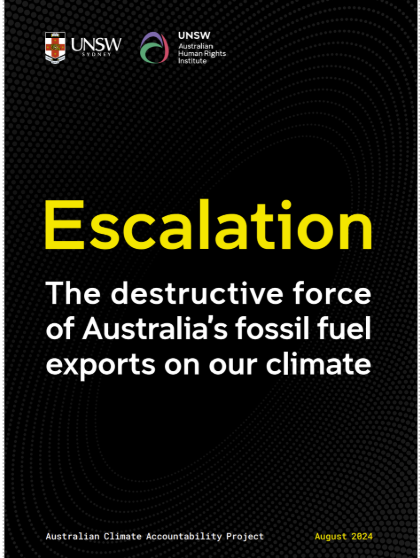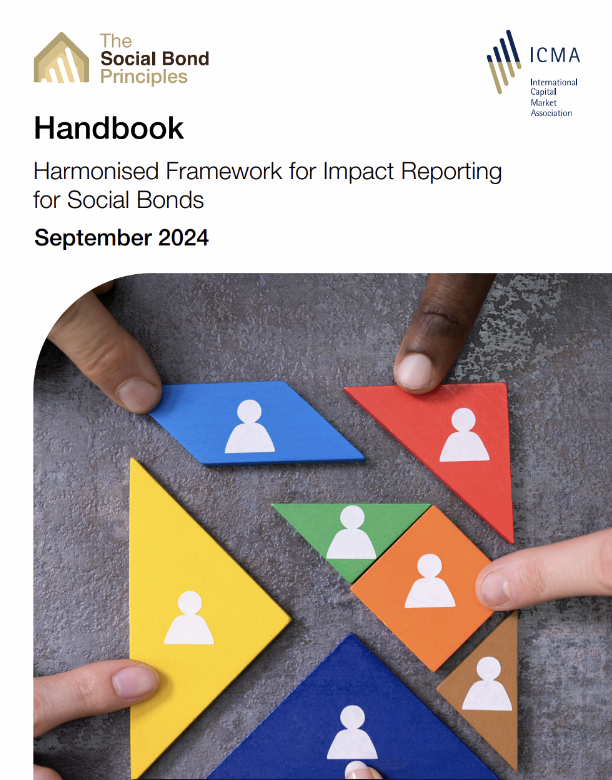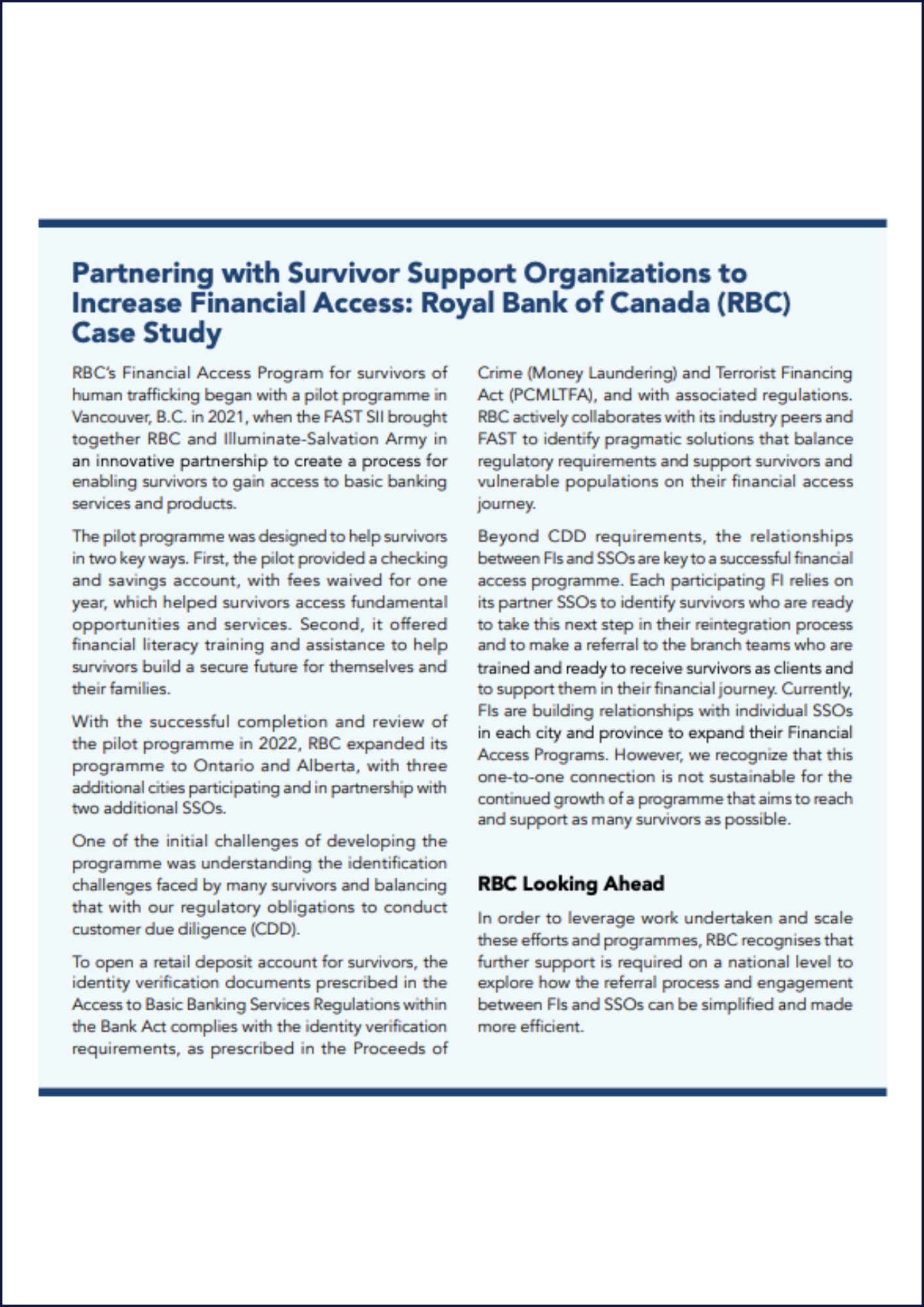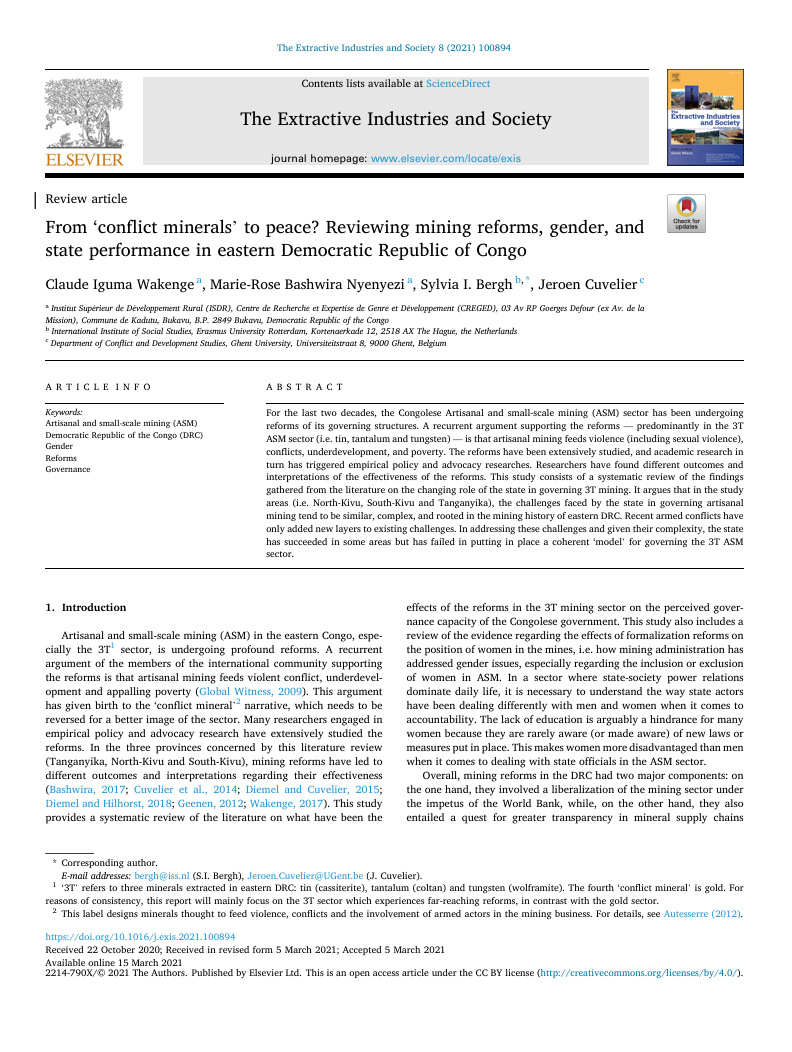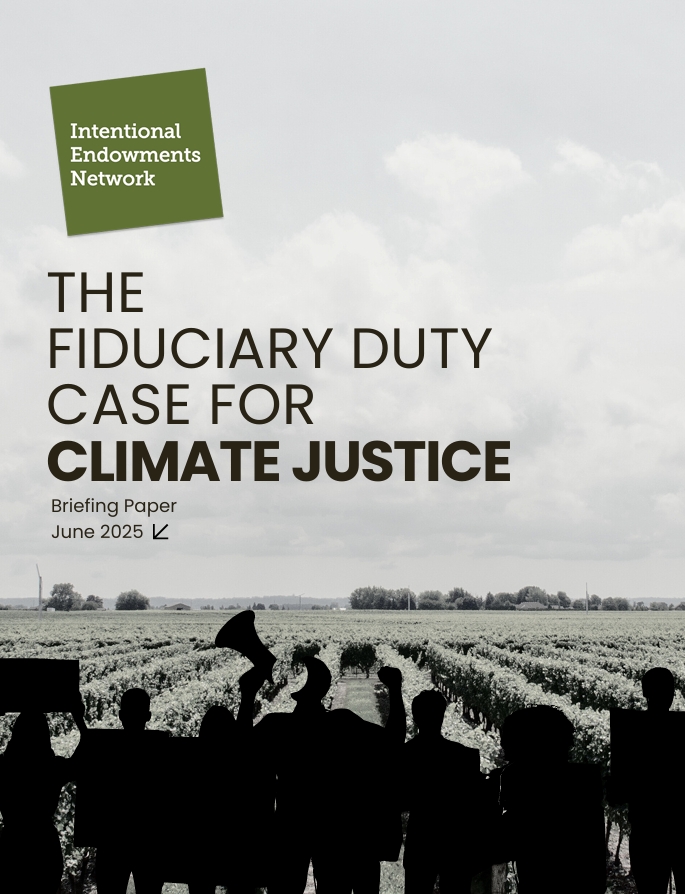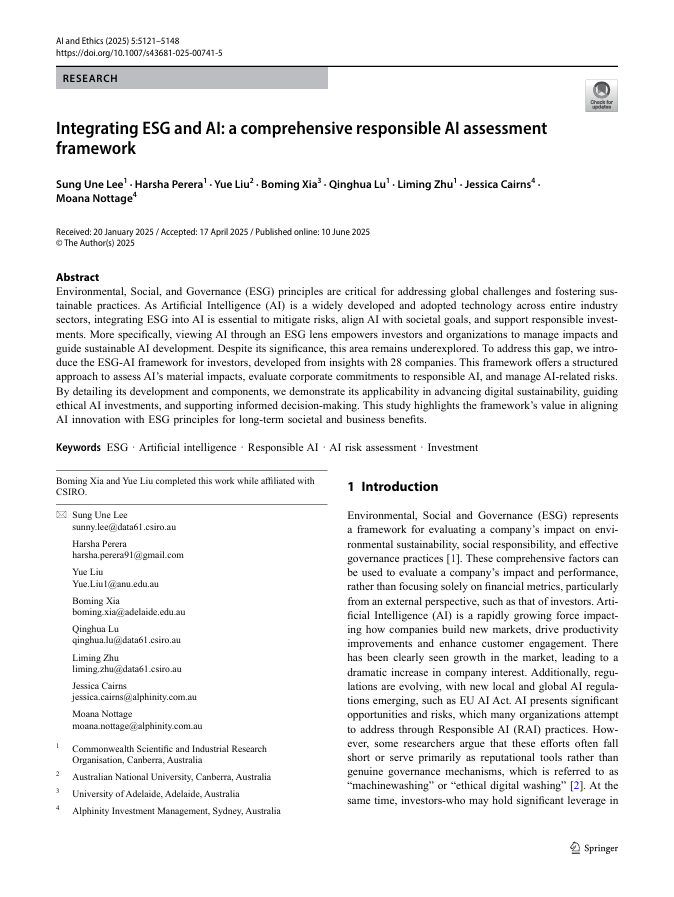Library | ESG issues
Governance
The governance pillar in ESG (environmental, social, and governance) refers to the systems, policies, and practices that ensure an organisation is managed responsibly and ethically. It includes issues such as board structure, reporting & disclosures, shareholders & voting, and risk management. Strong governance reduces risks, enhances trust, and supports long-term business sustainability.
Refine
1609 results
REFINE
SHOW: 16


Private capital, public good: Building shared prosperity to create a resilient and inclusive economy
The report outlines bipartisan US federal policy recommendations to mobilise private capital for shared prosperity. It focuses on strengthening economic competitiveness, scaling community investing, and improving impact transparency to support inclusive growth, underinvested communities, and long-term economic resilience.
Preparing for next-generation information warfare with generative AI
The report analyses how generative AI reshapes information warfare by enabling scalable manipulation, behavioural influence and dual-use knowledge diffusion. It highlights heightened risks to civilians, military operations and international law, stressing gaps in protection and the need for anticipatory, whole-of-society resilience strategies.
Sustainability-related risks and opportunities and the disclosure of material information
This educational material explains how entities identify and disclose material sustainability-related risks and opportunities under IFRS S1 and S2, focusing on impacts on cash flows, access to finance and cost of capital, and applying consistent, entity-specific materiality judgements.
International round table: Financing climate action at city level
This report synthesises discussions from an international round table on financing city-level climate action, highlighting how local governments overcome fiscal constraints through tailored funding scales, partnerships, innovative revenue mechanisms, and long-term approaches to deliver major decarbonisation programmes across Europe and North America.
Good practice case studies in scope 3 data collection
The report presents practical case studies on Scope 3 data collection, covering supplier, upstream, downstream and employee engagement. It outlines hybrid methodologies, use of primary and spend-based data, and emphasises collaboration, pragmatism and incremental improvement to support credible emissions measurement and reduction.
Escalation: The destructive force of Australia's fossil fuel exports on our climate
The report finds Australia’s fossil fuel exports significantly escalate global warming and domestic climate risks. It highlights missing policy restrictions, growing harms to people and systems, and urges an orderly, cooperative and just phase-out with regulatory reforms and international engagement.
Competing in the age of disruption: A business briefing by the University of Cambridge Institute for Sustainability Leadership
The report argues that global industrial transition is inevitable and accelerating, creating material risks and opportunities. It urges businesses to pursue innovation, reshape market rules and influence policy to secure competitiveness, manage systemic threats and drive sustainable market transformation.
AI governance behind the scenes: Emerging practices for AI impact assessments
The report outlines emerging organisational practices for AI impact assessments, highlighting common process steps, information gathering challenges, evolving risk-assessment methods, and difficulties evaluating mitigation effectiveness. It notes increasing cross-functional governance, reliance on third-party transparency, and the need for stronger metrics, education, and executive support.
Harmonised framework for impact reporting for social bonds handbook
The handbook provides a harmonised framework for issuers to report social bond impacts, outlining core reporting principles, target population disclosure, and preferred quantitative indicators. It introduces sector guidance—initially affordable housing—and offers templates to support consistent, transparent, and comparable impact reporting across social project categories.
Starting in and transitioning into sustainable finance careers
This guide explores ways to get started in and transition into sustainable finance careers. It focuses on how professionals can build foundational knowledge, apply transferable skills, and take opportunities to create impact. Through expert insights it highlights strategies to navigate evolving roles and align finance with real sustainability outcomes.
Royal Bank of Canada (RBC): Partnering with survivor support organisations to increase financial access
This case study explains how the Royal Bank of Canada piloted and expanded a financial access programme for survivors of human trafficking, using a risk based approach to customer identification and verification. It shows how regulated banks can advance financial inclusion while meeting compliance requirements through partnerships with support organisations.
Scotiabank: Partnering with survivor support organisations to increase financial access
This case study shows how Scotiabank partnered with survivor support organisations to improve financial access for modern slavery survivors. By piloting a simplified, risk-based customer due diligence approach, the bank balanced regulatory compliance with social inclusion, demonstrating a practical model for inclusive banking within existing know-your-customer (KYC) frameworks.
From ‘conflict minerals’ to peace? reviewing mining reforms, gender, and state performance in eastern Democratic Republic of Congo
The review assesses how 3T mining reforms in eastern DRC affected state governance and gender inclusion. Findings show mixed results: limited improvements in demarcation, revenue collection and oversight, persistent armed interference, weak accountability, elite-captured cooperatives, and ongoing marginalisation of women.
Briefing paper: The fiduciary duty case for climate justice
The report argues that climate justice is integral to fiduciary duty, as climate and inequality risks threaten long-term value. It outlines definitions, system-level investment frameworks, and practical tools that help investors manage systemic risks and support a just low-carbon transition.
Integrating ESG and AI: A comprehensive responsible AI assessment framework
The report introduces an ESG-AI framework enabling investors to assess AI-related environmental, social, and governance risks. Drawing on insights from 28 companies, it provides use-case materiality analysis, governance indicators, and deep-dive assessments to support transparent, responsible AI evaluation and investment decisions.
AI in anti-financial crime: The state of adoption in 2025
The report surveys senior leaders on AI adoption in anti-financial crime, finding limited current use but rapid expected uptake. It highlights technology shortcomings, emerging AI use-cases, leadership awareness, and barriers including cost, skills and regulatory uncertainty, outlining opportunities for more efficient, integrated and adaptive AFC capabilities.
